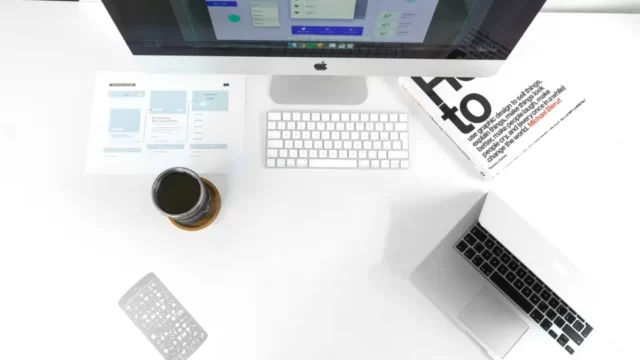It might be easier for you to succeed in this position if you are aware of the requirements for becoming an instructional designer.
To assist others in achieving successful educational outcomes, instructional designers conduct research and create instructional materials. These innovative teachers create engaging learning experiences by combining their technical expertise with their understanding of various learning styles.
There is a constant need for qualified instructional designers, and the field of instructional design is rewarding and financially rewarding. This article explains what an instructional designer is, why the position is crucial, how to become one, the practical skills required, and the typical salary.
How to Become An Instructional Designer?
Here are some steps on how to become an instructional designer:
Learn About Methods, Principles, and Theory
Success as an instructional designer requires a solid grasp of the theories and frameworks in the industry. Instructional designers make decisions based on theories like those proposed by Merril, ADDIE, Gagne, and Bloom’s Taxonomy.
Furthermore, in order to incorporate this knowledge into your designs, it is crucial to comprehend how and why people learn. Situated cognition theory, inquiry-based learning, and discovery-based learning are a few examples of these concepts.
In addition, a lot of employers demand advanced education from entry-level specialists, like an instructional design bachelor’s degree. For more career options, you might think about earning a master’s or a doctorate in instructional design.
You can learn more about these approaches and theories by reading articles or books, listening to podcasts, or enrolling in additional online courses.

Become Proficient With Relevant Software and Tools
Many employers expect beginning instructional designers to be familiar with creating e-learning modules using tools that are common in the industry.
To learn the features of these programs, it can be useful to watch online tutorials or how-to videos. Practice with them until you feel confident using the common programs.
Develop Essential Skills
Instructional designers might also conduct interviews with experts, develop courses and curricula, and conduct new initiative research. To perform successfully, one must develop a set of pertinent skills. Communication and technical writing skills
are vital for conveying objectives and messages to an audience. To manage projects with team members and subject matter experts, instructional designers also use their communication, planning, and problem-solving skills.
Other essential skills for an instructional designer include:
- Video production
- Graphic design
- Programming
Build a Portfolio
Employers frequently choose their employees based on their skills and experience. Participating in internships and volunteer work will help you build relevant experience. Amass a collection of the educational materials you produced or assisted in producing.
Consider creating a professional website to show prospective employers your most recent work. Alternatively, include a link to a professional networking website where your accomplishments and projects are listed.

Apply for Jobs
Start applying for instructional design jobs once you have the necessary knowledge and experience. You can prepare for job interviews by making a comprehensive resume
and practicing interview skills. On your resume, you might emphasize technical, curriculum design, and problem-solving skills.
You can get ready for an interview by practicing your answers to frequently asked questions, such as why you chose the field, what experience you have, and what value you can bring.
Skills for An Instructional Designer
Here are a few skills you can develop to help you be successful as an instructional designer:
- Creativity: Instructional designers come up with novel ways to present content to learners. Engaging audiences and achieving better results can be achieved by creating interactive, visually appealing content.
- Research: To stay current with market trends and incorporate them into fresh educational approaches, one needs research abilities. These abilities allow instructional designers to validate course material’s accuracy.
- Time management: Working on multiple projects at once, some of which may be in different stages of development, is typical for instructional designers. To keep each project on track and finish it on time, time management skills are essential.
- Communication: An instructional designer can achieve the course’s learning objectives by maintaining the audience’s attention through effective communication. The creation of top-notch educational materials is another way that instructional designers put their writing abilities to use.
Why Become An Instructional Designer?

Job satisfaction among instructional designers is high, they make above-average salaries, and they have a healthy work-life balance. Consider pursuing this career path if it fits your interests and you are confident in your ability to acquire the necessary skills (which we’ll cover in this article).
Here are some additional facts that demonstrate why instructional design is a promising career:
- In the United States, the average pay for instructional designers is $77,360, and their average annual income as independent contractors is $104,228.
- Annual job growth is frequently predicted to be 10%+.
- ‘Due to the high level of job satisfaction and the favorable work-life balance, instructional designers frequently appear on lists of the “top jobs.”
Some instructional designers have spoken about lacking a sense of direction, and this is probably most prevalent in corporate settings where designers are required to produce eLearning quickly.
What is An Instructional Designer?
You’ve heard the term “instructional designer,” but you’re probably still wondering exactly what an instructional designer does.
A good learning experience is produced by instructional designers. To create eLearning, in-person workshops, job aids, and other performance support solutions, they draw on best practices from education, design, psychology, systems theory, and creative writing.
Instructional designers do their work in the background as trainers or teachers present material to a live audience. When creating the learning experience, instructional designers frequently work with subject matter experts (SMEs), but they hardly ever deliver it in front of a live audience themselves.
What Does An Instructional Designer Do?

The art and science of developing learning experiences that assist individuals in acquiring the necessary skills is known as instructional design. Finding the most effective ways to fill knowledge and skill gaps, whether through online courses, games, or training videos, is the goal of the instructional designer.
Learning theory and technological content creation are two areas where instructional designers need to be experts. Authoring tools should be available to them so that they can produce engaging learning materials, deliver them, and improve training efficiency.
Instructional designers are responsible for a wide range of tasks. They include:
- developing compelling content that is in line with clear learning objectives.
- engaging with subject matter experts (SMEs) to gather data based on the requirements of the learners.
- the development of a thorough storyboard for the look and interactions of an online course.
- Using an authoring tool, creating online courses for learning and skill development, as well as creating tests and assignments for conducting knowledge checks and assessing training effectiveness.
- the creation of supplementary materials with multimedia, e.g., audio, video, screencasts, and gamification.
Instructional Designer Salary
An instructional designer’s yearly salary in the United States is $68,038. Your income may vary depending on your geographic location, experience, and employer.
For instance, an instructional designer with extensive experience might make more money than a beginner. Benefits like health insurance, paid time off, tuition reimbursement, and retirement savings accounts are also available to instructional designers through their employers.
Conclusion: Instructional Designer
An instructional designer creates experiences, content, and other materials to help students learn new skills and information. Children, teenagers, and adults can all be learners.
A big congratulations to you if you’ve read this far. A surefire way to enter the field and secure a fantastic instructional design job is to stick with this manual.
FAQs
What is the Path to Instructional Design?
A master’s degree in instructional design or a related field (or a bachelor’s degree with experience) is generally required. A cross between instructional designers and user experience designers, learning experience designers (LXD) create learning experiences.
What Are the Three Types of Instructional Design?
The model categorizes learning objectives into three core principles: Cognitive, Affective, and Psychomotor. The most popular model for developing learning objectives during instructional design is the cognitive model.

